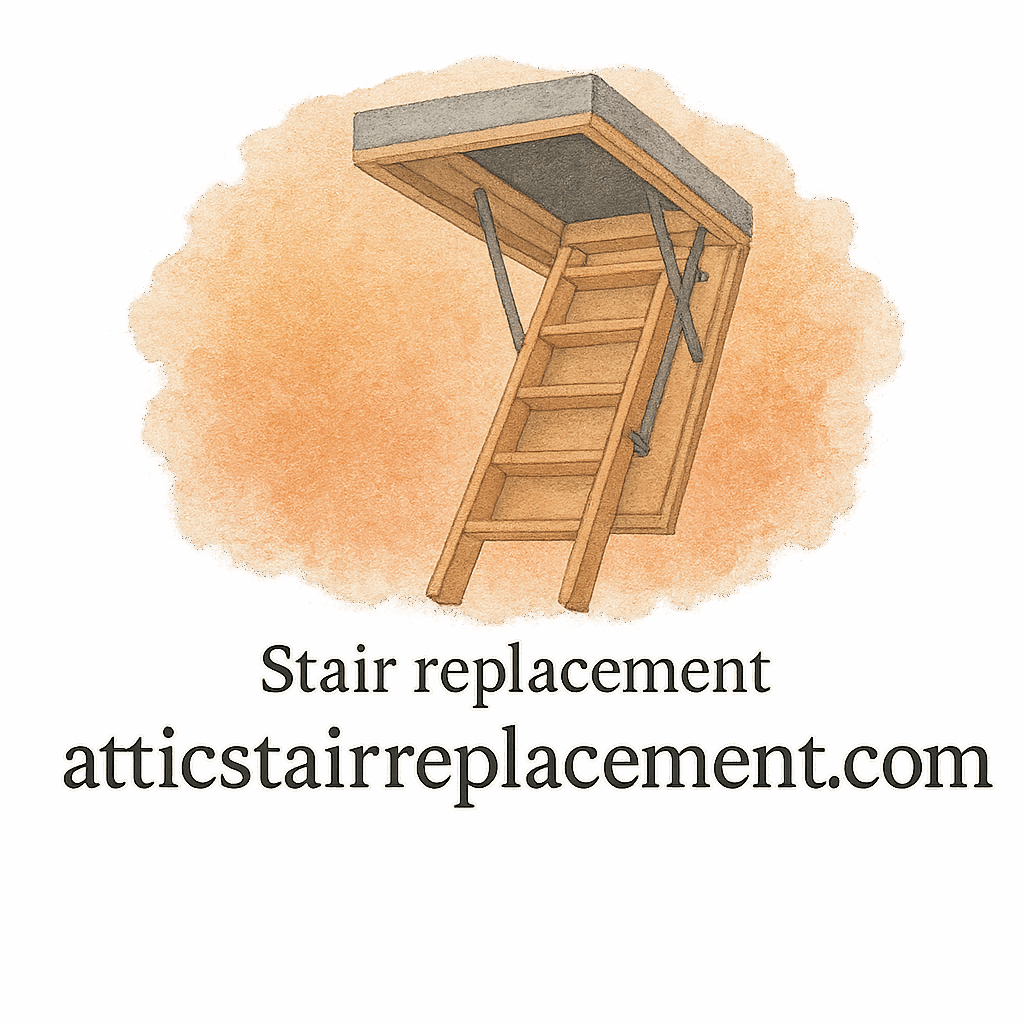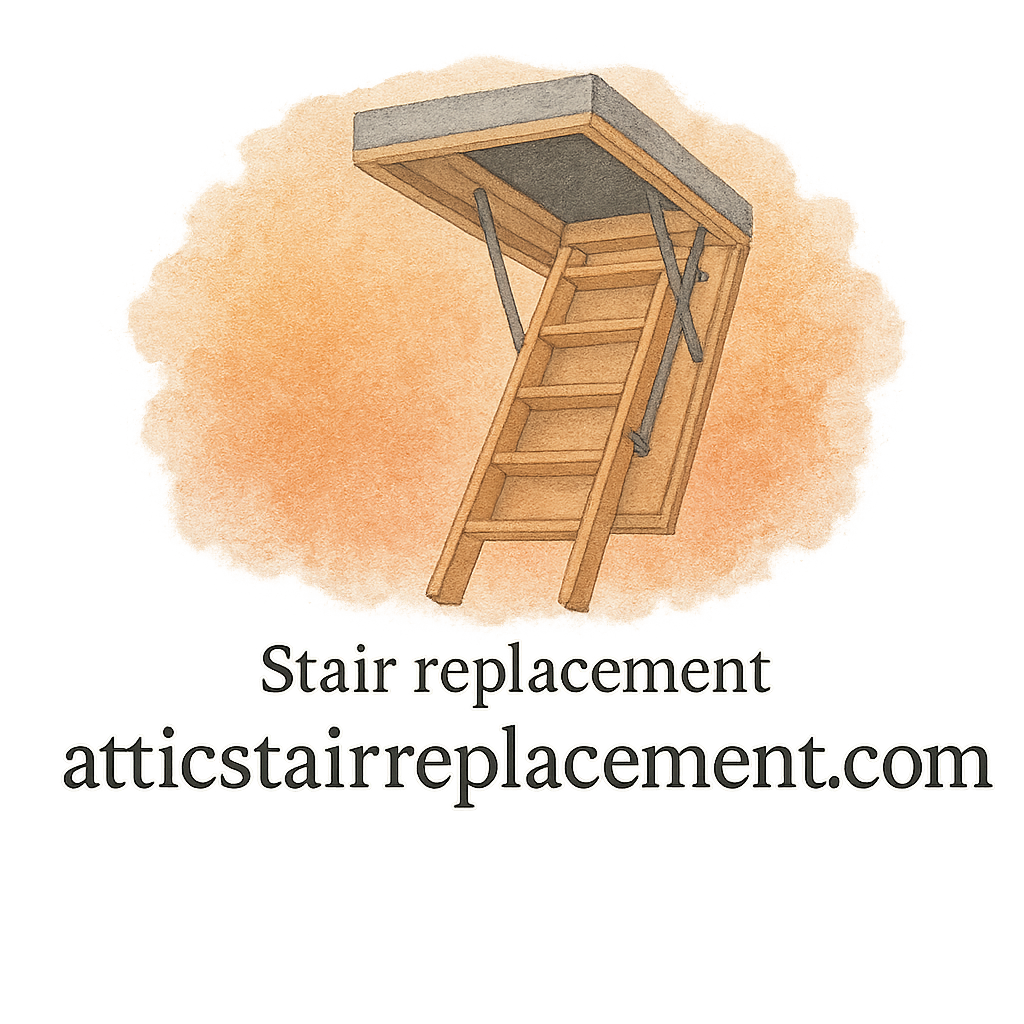Have you ever tackled a DIY project thinking, “How hard can it be?” only to find yourself knee-deep in tools, second-guessing every step? Replacing attic stairs is one of those projects that sounds easier than it actually is. Done right, it can improve safety, function, and even home value. But done wrong? You might end up with squeaks, instability, or worse—an attic you can’t even access safely.
So, before you grab that drill and measuring tape, let’s dive into the 8 reasons your DIY attic stair replacement might fail—and more importantly, how to avoid them.
1. Poor Measurement Practices
Why Accurate Measurement Matters
This one tops the list for a reason. Incorrect measurements are like building a house on a crooked foundation. If your opening is too big or too small for the stair unit, you’ll be stuck with gaps, loose fittings, or a wobbly install.
And let’s face it, “eyeballing it” doesn’t cut it when dealing with ceiling openings and spring-loaded staircases.
Common Measurement Mistakes
- Not accounting for the trim or frame thickness
- Ignoring the height from floor to ceiling
- Forgetting the clearance space in your attic
Always double-check, and then—check again. You can find more expert advice on getting the right fit on our blog.
2. Using Low-Quality Materials
Shortcuts That Compromise Safety
Cheap materials may save you money upfront, but they often lead to squeaky steps, unsteady handrails, or full-blown collapses. That $50 you saved? It could cost you a lot more in repairs—or hospital bills.
Choosing Durable, Reliable Parts
Go for durable components designed specifically for attic stair systems. Look for models tested for weight capacity, rust resistance, and smooth folding mechanisms. Our product reviews section breaks it all down for you.
3. Skipping Safety Checks
The Safety Checklist Every DIYer Needs
Installing attic stairs involves tools, weight-bearing components, and often a ladder. You wouldn’t skip a seatbelt in a car, so don’t skip safety checks here.
Use this mini checklist:
- Are the joists properly supported?
- Is the ladder securely bolted to framing?
- Have you tested the folding mechanism under weight?
What Happens When You Don’t Double-Check
One missed bolt or misaligned bracket can cause a job quality disaster. A safe install is a successful install—don’t rush it.

4. Improper Tool Use
Tools You Really Need
Let’s make one thing clear: a screwdriver and hammer alone won’t cut it. For attic stair replacement, you’ll need:
- Power drill with proper bits
- Wrenches or ratchet set
- Level
- Stud finder
- Safety gear (goggles, gloves)
What Happens When You Improvise
Using the wrong tool can lead to stripped screws, weak attachments, or even injury. Trust us, duct tape won’t save a misaligned hinge.
For full instructions and DIY installation tips, check out our dedicated guide.
5. Ignoring Manufacturer Instructions
Read the Manual—Seriously
We know, reading instructions isn’t fun. But every attic stair model is a little different. Skipping the manual is a fast track to a failed install.
Missteps from Misreading Directions
We’ve seen it all: hinges installed upside down, steps mounted backward, safety straps left off. Follow the guide and make your life a lot easier.
You can also find expert video walk-throughs to help clarify tricky steps.
6. Not Considering Ceiling Height or Weight Load
Every Inch (and Pound) Counts
An attic ladder that’s too short won’t reach the floor. One that’s too long? It won’t fold back correctly. Then there’s the weight factor—most models support 250–350 lbs, but some households need heavy-duty options.
When Your Attic Ladder Doesn’t Fit the Job
Not considering ceiling height and user weight is one of the most common mistakes. Use a guide to match your space with the correct ladder.
7. Overlooking Long-Term Maintenance
The Importance of Post-Install Care
Even a perfect install can go south without regular check-ups. Tighten bolts, lubricate hinges, and inspect wood for wear or pests. This is especially important in humid or cold climates.
How Maintenance Extends Lifespan
Good care adds years to your attic ladder. For complete maintenance checklists and repair tips, visit our maintenance section.
8. Underestimating the Complexity of Installation
It’s Not Just “Screw It In” and Go
There’s framing involved. You may need to re-frame the opening, move joists, or adjust trim. This isn’t IKEA furniture—we’re talking about structural changes.
When to Call in a Professional
If you’re stuck or unsure, there’s no shame in calling a contractor. A bad install could cost more to fix than doing it right the first time.
Check our home improvement section for help deciding whether to go full DIY or bring in backup.
Conclusion
DIY attic stair replacement can be empowering—but only if done right. With a sharp eye, the right tools, and the knowledge to back you up, you can install a safe, durable set of stairs that’ll last for years.
But cut corners or rush, and you could find yourself with a creaky, unsafe mess—or worse, a fall from ten feet up.
So take your time. Use the right materials. Double-check every step. And when in doubt, lean on trusted advice and expert resources to guide you through.
FAQs
1. Can I install attic stairs by myself or do I need help?
You can technically do it solo, but a second pair of hands makes alignment and lifting much easier and safer.
2. What’s the best type of attic stairs for a small space?
Compact folding or telescoping models are ideal. Check our product reviews for top-rated options.
3. How do I know if I bought the right size attic stairs?
Measure the rough opening, ceiling height, and landing space. Compare with the manufacturer specs, or use our installation guide.
4. What’s the most common reason DIY installs fail?
Improper measurements and ignoring instructions are the top culprits.
5. How often should I inspect my attic stairs?
Twice a year is a good rule of thumb—spring and fall are great times for preventive maintenance.
6. Is there a hidden cost to DIY attic stair replacement?
Absolutely. Time, potential repairs, and safety risks can add up. Read more about hidden costs on our blog.
7. Where can I find step-by-step guidance for my attic project?
Right here on our site! Explore our tag: steps and home project resources for detailed help.


